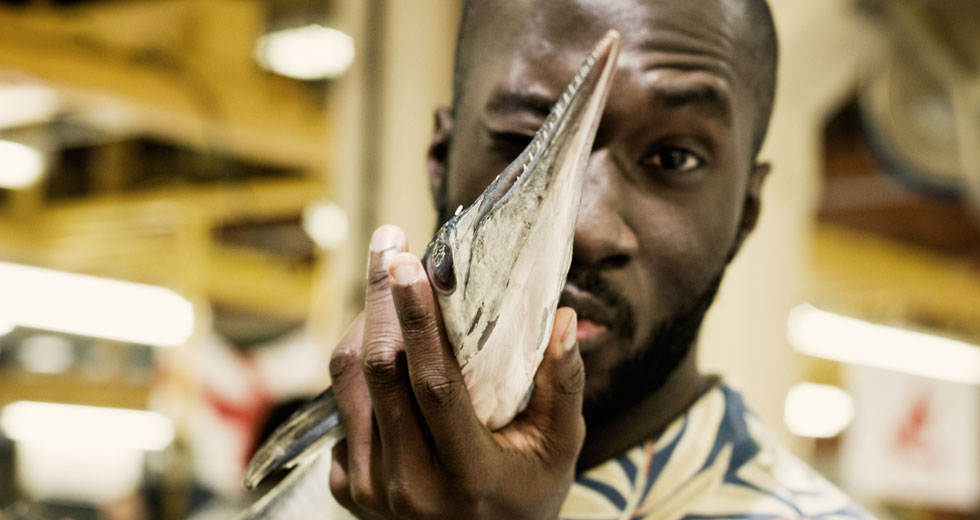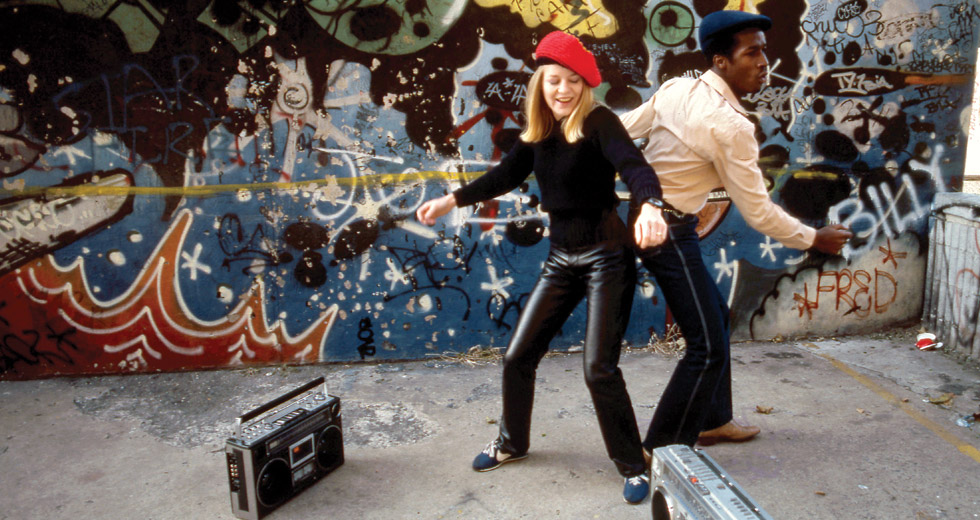Lord Of The Mics: An Interview With Jammer
In 2004, respected grime MC and producer Jammer (aka The Murkle Man) – with help from his friend Ratty – released the first Lord Of The Mics DVD and accompanying compilation CD, pitting MCs against each other in recorded battles. After the second in the series dropped two years later, Lord Of The Mics was firmly established as one of the scene’s most important – and favourite – documents, with its limited run of DVDs achieving cult status. With the fourth in the series released on Monday, Joseph ‘JP’ Patterson speaks with Jammer about its legacy.
Grime is a genre that’s had to fight long and hard to maintain once-excited critics’ interest after some of its biggest names decided to go pop. There are, however, a handful of well-known faces still around from yesteryear who have continued to invest time and money into making sure that grime music remains in people’s consciousness. Jammer, a producer and MC from east London and part of the Boy Better Know crew (winners of our 2012 London Culture Clash), and formerly of NASTY Crew, is one of them.
Along with Wiley, Dizzee Rascal, et al., Jammer has made a name for himself not as only a skilled rhymer and beatmaker, but also a campaigner for grime music – one who has made it a point to get the genre to the forefront of UK urban music. And his legendary Dungeon – which is a small room in his basement – will go down in grime history as one of its central creative hubs, which the thousands of signatures on the walls can verify.
In 2004, Jammer and his friend, Ratty, came up with a concept in his basement that is now considered one of the main platforms for promoting grime MCs: Lord Of The Mics. It’s a DVD series which sees both established and up-and-coming spitters getting in front of the camera to “send” for each other in a bid to win the battle. And with the release of Lord Of The Mics 4 around the corner, it was only right we spoke with Mr. Murkle Man to give us a history lesson in clashing and the grime DVD phenomenon.
What was the thinking behind the Lord Of The Mics project, and who has been involved in making it such a respected platform for grime?
Well, one day, the man dem were just jamming in the studio. I was in there with Kano, Sharky Major and a few other people, just chilling out. I said to Kane, “What do you reckon about clashing Wiley?” At the time, Kane had just come in the scene, and I’d signed him to my label to help get his stuff out there and to let more people know about NASTY Crew. So, I asked him what he thought about clashing Wiley, and told him that it would be big for him as the hottest new MC to go up against the father, and that it would do a lot for him. He was on it. Wiley hollered at me when he got off the plane from Miami or New York, and came over to the studio straight from the airport. When he got there, I whipped out this handheld camera I had to film things that was going on. I asked him what he thought about clashing Kano. Back in those days, you couldn’t ever turn down a clash. That was one thing about being a grime MC: if someone wanted to battle, you had to battle them. We went down in the basement, played the beat and they had the battle in there. We haven’t looked back since!
There was a five-year gap between Lord Of The Mics 2 (2006) and Lord Of The Mics 3 (2011), so it’s something you clearly had to think long and hard about bringing back. At what point did you think yourself, “The time is right?”
Basically, a lot of things went on. We actually tried the year before, but it wasn’t really happening. At that time, a lot of MCs were looking at record deals, and there wasn’t really any new talent. All of the talent that had been there for years, half of them had been on it, and the other half were maybe about to sign a deal and didn’t want to jeopardise it by battling and potentially losing. It was a bit hard to get anyone to battle. A few people tried desperately to recreate the series, so me and Ratty went back to the drawing board and got back to work. We worked on finding people who wanted to be involved and take part.
There was a lot of hype building up for the OG Niki and No Lay clash, and the P Money and Ghetto clash – everyone was surprised and happy that we were finally back. Unfortunately, we didn’t get to film those clashes, but, when [LOTM3] came out, we managed to build awareness of a new artist. Kozzie was doing his thing and people knew about him, but it brought him to a wider audience. It was a battle that was picked through me, rather than MCs exchanging a few bars on radio or on the net. Sox, who Kozzie battled, started choking in the first round. It was a massive talking point and everyone wanted to watch the clash with him choking. It became a story, more than just a clash. People started to become interested in things going on behind the scenes. We made that clash happen and then a few other people wanted to battle. We put it out on Twitter and got the Lord Of The Mics name booming again. The artists came together and we did it – it was like grime was fully back.
Wiley phoned me and said that I had brought grime back.
We did a few launch parties, with tickets selling out on the first week that they were released, and everyone came out and supported. It was a good time for grime last year. Not trying to blow my own trumpet or anything, but Wiley phoned me and said that I had brought grime back, and that he needed to bring Eskimo Dance [Wiley’s influential grime parties, revived at the beginning of 2012] back. Boy Better Know, Lord Of The Mics and Eskimo Dance really took over – everything was coming together at the same time, it was banging. Then we had a lot more artists coming through. Kozzie really started to take his career seriously and put out singles, videos, etc. We’ve been blessed, man. Last Christmas, the Lord Of The Mics DVD and CD charted – which was a great feeling – and a lot of major labels were like, “Wow! That’s a big achievement.”
Lord Of The Mics 3 was a major success. How did it feel to know that people still loved what the whole thing represented?
It was amazing, man. When you’re doing something, you don’t realise the power of it. So many people respect it, love it, and it’s become a historical thing for grime over the years. Even when we would go to certain shops and printer places, there would be different characters working there, and when we showed them the logo, they’d always be like, “Yes! Lord Of The Mics is back!” You would never think they would even know anything about grime. It brings different clientele, it’s not just your average grime fan – and bringing back Lord Of The Mics 3 brought my awareness to that. I’ve realised the power of it, so it’s a good feeling. I didn’t realise how serious it needed to be and I’ve put in place things that needed to be put in place to have a structure, and that’s why we’ve come back so quick with the fourth in the series.
What’s the criteria for the MCs out there wanting to apply to be on the next series? Like, do they need to have sold a certain amount of CDs, have a certain amount of Twitter followers or something?
No matter who you are or where you’re from, you’ve just got to keep on putting the work in and continually put up new music on YouTube, and things like that. You need to be getting at other people in the scene before even trying to get on Lord Of The Mics. I know it’s harder when you’re up there, but when it comes to the time that your name gets mentioned and someone else says, “Yeah, I know that guy, I’ve heard his tune,” or, “He tried to get at me,” it shows you’re wanting it. You don’t get that opportunity just from sitting in your house.
In the early days, two MCs going at each other on the mic got very heated – which is expected after dissing each other’s mothers and so on – but now, I feel, it’s much more controlled. Would you agree?
Nah, I think it boils down to the fact that artists have a lot more respect for me and what I’m doing, and what we’re trying to do for the scene. Where somebody might have wanted to punch someone in the face back in the day, they’ll think twice about it now because they’d be violating the circle and violating the game. It’s going to look bad on us. If that happens, we’re not going to work with you or promote and speak good words about you to others, and then you’ll fade out and other MCs will have your spot. You do that, you’re killing yourself. You’re more real if you can control your emotions. If you’re looking for a fight, go to a boxing match or take up karate.
Out of each Lord Of The Mics series, I want you to give me your favourite clash and tell me the reasons for choosing them...
LOTM 1
The first one would be Wiley and Kano, because it was the first ever set up in the studio. It’s a historical and amazing clash. Kano was coming with a brand new way of MCing, and Wiley obviously had his way and was already a legend before that.
LOTM 2
It would have to be Skepta and Devilman, not only because it was an amazing clash, but Skepta was coming up in the scene and I’m a big fan of Devilman. I got to watch Skepta’s career grow. I saw how passionate he was and how serious he took battling, and how he used all of the recognition he got off the back of the battle to carry on the progression of his career to take it to where it is now.
LOTM 3
This one’s a hard one. Clash-wise, it would have to be the Kozzie and Sox one because of the hype that surrounded it. When it comes to battling, there were a few that I proper rated, but when I sit down to just watch one in years and years to come from the third series, I think it’d be Wariko and Diesle, and Jendor and Tre Mission. As they’d seen the series in the past, they did their research, took it serious, had a lot of lyrics and they came prepared to do battle, armed with lyrics, strapped up and ready for the war to extinguish!

